Discover Sticky Notes: The Classical Music Podcast
Sticky Notes: The Classical Music Podcast

Sticky Notes: The Classical Music Podcast
Author: Joshua Weilerstein
Subscribed: 5,499Played: 211,247Subscribe
Share
Description
Sticky Notes is a classical music podcast for everyone, whether you are just getting interested in classical music for the first time, or if you've been listening to it and loving it all your life. Interviews with great artists, in depth looks at pieces in the repertoire, and both basic and deep dives into every era of music. Classical music is absolutely for everyone, so let's start listening! Note - Seasons 1-5 will be returning over the next year. They have been taken down in order to be re-recorded in improved sound quality!
276 Episodes
Reverse
A piece that I have been asked to cover probably a dozen times is Handel's Messiah. It's a piece I love, but a piece that I've never conducted or played, and so therefore I don't know it incredibly well. There are plenty of pieces like this in the repertoire, and so I've decided to start a new series on Sticky Notes, which will be to take pieces that I don't know very well and to bring on experts to help me learn about them. This series will be a bit sporadic, and won't disrupt the but I'm really excited to share the first episode in this series, all about the Handel Messiah, featuring my good friend and the wonderful conductor Aram Demirjian, the Music Director of the Knoxville Symphony! I really hope you enjoy this episode and that you have a Happy Holidays and New Year!
Mr. Holst, wherever you are, I apologize in advance for what I'm about to say. From my research, I know you resented this fact, but unfortunately, I think it's true. Here it is: despite the large catalogue of music Gustav Holst composed, much of it wonderful, he is essentially a one-hit wonder in the classical music world, à la Pachelbel, Dukas, Mascagni, and others. His one hit is a big one, though: an epic, seven-movement suite entitled The Planets. As I said, Holst was not happy about this in the slightest. He was a prolific composer and someone who devoted himself fully to his subjects. He considered other works he wrote better than The Planets, and yet, in the end, we hear very little of his other music, though since the 1980s some of it has been performed more frequently, particularly in the UK. But The Planets is truly a hit: the reason we know Holst's name today, and one of the most frequently performed pieces in the entire Western classical canon. Holst took a novel approach to his depiction of the planets. They are not ordered by their astronomical distance, but by musical cohesiveness. Nor do they depict the planets in a scientific sense; instead, they present a deeply personal astrological interpretation, something we'll explore as we discuss the piece. The orchestration is massive yet subtle, with colors unique both to the work itself and to Holst's output more broadly. It is easy to listen to and straightforward, while also somehow intensely complex and varied. It is powerful, Romantic, thrilling, joyous, mysterious, terrifying, and ultimately cosmic in both conception and execution. This is one of those pieces that people love without necessarily giving it the full respect it deserves. So today on the show, we'll learn a little about Holst's life, what led him to write The Planets, and why this piece grabs hold of us and doesn't let go throughout our journey through the stars. Join us!
In the 1960s, Leonard Bernstein famously helped to popularize the music of a then relatively obscure composer, Gustav Mahler. His work, as well as the work of other conductors, made Mahler into a classical-music household name. Mahler's symphonies are played every year all over the world, and he is firmly ensconced in the so-called canon of standard orchestral repertoire. Would it surprise you to know that Franck's D Minor Symphony once had the same reputation? It was played almost every year by most major orchestras, it was recorded by all the great conductors, and it was a fixture of the canon just like a Brahms symphony. Nowadays you would be lucky if, outside of France and Belgium, you hear Franck's Symphony once every five years, if that. The truth is that, other than a short golden period for this symphony, it has either been controversial (around the time it was premiered) or ignored (nowadays), which is a real shame, since it is a glorious piece that I would argue is drastically underrated in our modern world. The symphony was radically innovative for its time, which probably explains some of the more virulent criticism it received, but even though those innovations now sound completely normal to our ears, they are still at the heart of what makes this symphony so profoundly satisfying to listen to. Ahead of my performances of the symphony in Lille this December, I wanted to dive in and explore this unfairly ignored masterpiece. In about 40 minutes of music in three grand movements, Franck pours his soul into this work. That phrase sounds a bit cliché, I know, but I really mean it; there is an earnestness about this music that I find deeply moving, and it is something we will explore together today. We will talk about Franck's late entry into the world of composition, his reputation as an organist, and the challenges he faced in finding acceptance as a composer. Along the way, we will discuss this gorgeous piece in all of its passion and intensity. Join us!
Nowadays it's hard to imagine Maurice Ravel as a "bad-boy" revolutionary, a member of a group whose name can be loosely translated as The Hooligans. To most listeners today, Ravel's music is the very picture of sumptuous beauty. But the group he belonged to, Les Apaches ("The Hooligans"), earned its name because of its members' uncompromising attitudes about music; attitudes that clashed sharply with the conservative tastes of the establishment. Another composer who belonged to Les Apaches was the Spanish composer Manuel de Falla. Falla is certainly not as well known as Ravel, but the two became fast friends when he arrived in Paris in 1907. They formed a kind of mutual-admiration society that proved immensely fruitful for both of them. Falla was deeply impressed by Ravel's Spanish-inflected music, marveling at its authenticity given that Ravel was French. But Ravel, now a symbol of French music, was the son of a Swiss father and a Spanish-speaking mother, and he was born just eleven miles from the Spanish border in the Basque region. His Spanish voice was no affectation; it came from somewhere deep within, and Falla noticed this immediately, remarking that Ravel's Rapsodie espagnole was "a Spain ideally presented by his mother." Today on the show we'll explore the Spanish world of Falla and Ravel through two central works: Falla's Nights in the Gardens of Spain and Ravel's Rapsodie espagnole. These pieces, both astonishing in their creativity and craftsmanship, offer a wonderful opportunity to compare and contrast the music and approaches of these two close friends. We'll also talk about Les Apaches and their goals, legacy, and some of their legendary members. All this and more is coming up on this final collaboration on Ravel and Friends with G. Henle Publishers! Join us!
Longtime listeners of Sticky Notes know that Shostakovich's 10 symphony was the inaugural piece covered on the show. It's been 8 years(!) since that show, so I've totally re-written the episode and had the privilege of presenting this new version live with the Aalborg Symphony Orchestra last week in Aalborg. Shostakovich, like so many composers before him, was obsessed with musical codes and messages, with songs that expressed two or more meanings, with ideas that were at once black and white and profoundly complex. This also describes Shostakovich himself, a man who was incredibly guarded with his public persona, and even his private persona as well. It is impossible to know anything for sure with Shostakovich, and to me therein lies the greatest strength of his music. The 10th symphony has been described as a portrayal of the Stalin years, as a portrayal of obsessive love, as a requiem, as sarcastic, as humorous, as agonizing, as triumphant, as, as, as….and the truth is that like all of the greatest works of Western Classical music, it is all of those things and so much more. It is a work of profound intensity, grabbing you from the start and not letting go for nearly 50 minutes, which makes sense considering that the piece was written in the shadow of another momentous event, the death of Joseph Stalin. There are very few experiences like hearing Shostakovich's 10th symphony live, and it is the kind of piece that, by the end of it, leaves you a slightly different person than you were when it started. Today on the show, we're going to be talking about a wide range of topics, from orchestral color to Joseph Stalin, from symphonic form to obsessive love, and much more. Join us!
There are so many great apocryphal stories in the long history of classical music, from the reason Tchaikovsky wrote his Sixth Symphony to what famous composers supposedly said on their deathbeds, to my favorite story: how Joseph Haydn's Symphony No. 96, The Miracle, got its name. Apparently, during the premiere of the symphony, a chandelier fell, but miraculously didn't hit anyone. Hence, The Miracle Symphony. The chandelier did, in fact, fall, but we now know it happened during the premiere of Haydn's Symphony No. 102, which has no nickname. Coincidentally, or perhaps not so coincidentally, the 96th Symphony is performed far more often than the 102nd, likely because of its nickname, even though it's the nickname of the wrong symphony. The Barber Violin Concerto has a great and true story behind it. But before certain information was revealed in 2010, the story everyone knew was quite different. The original version goes like this: Barber had completed the first two movements of his Violin Concerto and sent them to the soloist scheduled to premiere the work, Iso Briselli. Briselli didn't like the concerto, claiming it wasn't virtuosic enough, and asked Barber to write something more difficult. Barber, perhaps with an evil laugh, obliged and returned with the third movement. When Briselli received it, he realized he couldn't play it because of its extreme difficulty and ultimately withdrew from the premiere, which instead went to violinist Albert Spalding. It's a perfect "Icarus flying too close to the sun" kind of classical music story, but as it turns out, it isn't the full story. In 2010, letters were released between Barber, Briselli, and the real instigator in this little operetta, Briselli's violin teacher, Albert Meiff. I'll get into the whole story later, but it's a good one, even if it's not quite as cinematic as the legend. More important than the dispute over its last movement is the remarkable beauty and creativity of this masterful 20th-century concerto. Barber's Violin Concerto is one of my favorite pieces to play and to conduct, and it has charmed audiences ever since its premiere. It features Americana music of a kind only Copland could equal, as well as a heartbreaking oboe solo that might be one of the greatest moments in the history of American classical music. And then there's that pesky third movement, a challenge to every violinist (and orchestra) and a movement that remains controversial for many reasons.
One of my favorite things about having Patreon sponsors is that they often suggest the most fascinating pieces and topics for shows. Adrian, who sponsored a show last year, gave me one of my favorite prompts when he suggested looking at works based on literature. Now he's sponsored another episode, this time with an equally compelling idea that I was eager to explore right away. His prompt was: "The evolution of conducting techniques throughout recorded history. How have innovations from great conductors changed how music is performed and understood?" As a conductor, the thought of diving into different recordings of a single piece naturally whets my appetite. But the real reason I was so excited about this episode is that interpretation is, in my view, wildly misunderstood. I've tried to tackle this idea in many different ways, in my episode about the sound of the violin with Soovin Kim and my dad, Donald Weilerstein; in my "What Does Music Mean?" episode; and even in "What Does a Conductor Really Do?" But I've never taken a single piece and focused solely on its interpretation, and on how that interpretation has changed over time. This gives us the chance to dig deeply into what makes an interpretation. So today, I'm going to share a set of recordings of one piece (and don't worry, I'll reveal which one in a moment). I'll talk about what sets them apart, both the obvious differences, like pitch and extremes of tempo, and the more subtle ones, like vibrato, phrasing, and other elements of performance that most listeners aren't trained to notice. So, let's do some exploring together, coming right up, on Sticky Notes.
The great Polish composer Witold Lutoslawski said this after the premature death of his contemporary Grazyna Bacewicz: "She was born with an incredible wealth of musical talent, which she succeeded to bring to full flourish through an almost fanatical zeal and unwavering faith in her mission. The intensity of her activities was so great that she managed, in a cruelly-shortened life, to give birth to such treasures that any composer of her stature with a considerably longer life span could only envy." Bacewicz is a name that is probably not that familiar to you, but during her lifetime she was an extremely popular composer in her native Poland and across Europe as well. In the United States, her music has been rarely performed, though this has started to shift thanks to a renewed interest in female composers of the past. This new look at Bacewicz has revealed an incredible wealth of music. Bacewicz was one of the most prolific composers of the 20th century, writing over 200 works during her short lifetime! Some call her style neo-classical, but the main thing that I hear in her music is a sharp originality that permeates her music and makes her compositions a thrill to listen to. The vitality, energy, and creativity that embodies Bacewicz's works will be the main part of the show today, as we'll go through a set of some of her most representative pieces, pieces that I hope will enter the standard repertoire of performers all over the world even more so than they already have. So join me today to explore the life and music of this unfamiliar but vital 20th century master!
I had such a wonderful time joining the jazz podcast You'll Hear It! We talked about the meeting of jazz and classical music, a topic I've explored before, but never in this much depth and never with so much input from jazz musicians and experts like Peter Martin and Adam Maness. We talk about great jazz and classical composers, but we also talk about the strange divide between jazz musicians and classical musicians, trying to break down the barriers that exist between purveyors of these wonderful genres of music. I hope you enjoyed this one as much as I did!
In the mid-1920s, Maurice Ravel wrote a letter to the legendary composition teacher Nadia Boulanger. Boulanger's class was a mecca for composers, both young and old, and musicians from all over the world vied to study with her. But Ravel's letter wasn't on his own behalf. Instead, he urged Boulanger to take on a young student whom Ravel himself had declined to teach. He wrote: "There is a musician here endowed with the most brilliant, most enchanting, and perhaps the most profound talent: George Gershwin. His worldwide success no longer satisfies him, for he is aiming higher. He knows that he lacks the technical means to achieve his goal. In teaching him those means, one might ruin his talent. Would you have the courage, which I wouldn't dare have, to undertake this awesome responsibility?" Boulanger also declined to take Gershwin as a student, fearing, like Ravel, that she might damage his spontaneity and dynamic jazz sensibility. Whether or not the famous story is true (that Ravel turned down Gershwin's request to study with him by saying, "Why be a second-rate Ravel when you are a first-rate Gershwin?") we may never know. But the two composers were friendly, and formed something of a mutual admiration society. Today, in this fourth collaboration with G. Henle Publishers in honor of their Ravel and Friends project, we're going to explore the connections between these two great composers: their friendship, their mutual influence, and the profound ways jazz infused itself into Ravel's music, particularly in his Violin Sonata and Piano Concerto in G. From the moment he discovered it, Ravel adored jazz, and like many French composers of the time, allowed its influence to permeate his work in ways both explicit and subtle. Join us!
There is a special category when it comes to Beethoven; a catalogue that doesn't include complete symphonies, sonatas, concerti, string quartets, etc., but just single movements. This is the catalogue of great Beethoven slow movements. Beethoven's slow movements are like a great Tolstoy novel. They span the gamut of human experience and also reach beyond it, into something we cannot understand but all somehow perceive. Simply put, Beethoven often seems to know us better than we know ourselves. This brings me to the slow movement of Beethoven's Hammerklavier Sonata. Unlike those late quartet slow movements, the slow movement of the Hammerklavier is not about ecstatic contemplation. Instead, it is a movement of pure and profound despair. It has been described as "a mausoleum of the collective suffering of the world," and "the apotheosis of pain, of that deep sorrow for which there is no remedy, and which finds expression not in passionate outpourings, but in the immeasurable stillness of utter woe." This is not a movement I would necessarily enter into lightly as you go about your day—it requires you to take a moment and enter a world unlike any other. Today, in Part 2 of this Patreon-sponsored exploration of this great, in all senses of the word, Sonata, we'll go through this slow movement in detail. Then we'll tackle the life-affirming and maddeningly complex last movement, which is not quite the antidote to the slow movement, but perhaps it is the only possible answer to the questions the third movement so profoundly asks. Join us!
Beethoven once wrote to his publisher: "What is difficult, is also beautiful, good, great, and so forth. Hence everyone will realize that this is the most lavish praise that can be bestowed, since what is difficult makes one sweat." If this credo manifests itself most powerfully in any one of Beethoven's works, it might be the piece we'll talk about today, the piano Sonata Op. 106, nicknamed, "Hammerklavier." It is the longest Sonata Beethoven ever wrote, which essentially means that it was the longest sonata anyone had written up to that point. It marks one of the pivot points between Beethoven's so-called heroic period and his late period, where his music became even more cosmically beautiful than before. It is certainly his most ambitious Sonata to that point, and his most difficult. The scale of the Hammerklavier sonata is hard to describe; in around 45 minutes of music, Beethoven explores the full gamut of human emotion. The intensity, the difficulty, and the concentration that this sonata requires from the pianist and listener alike has led to many people, as the pianist Andras Schiff says, to "respect and revere this Sonata, but not love it." Most of the articles and analyses of this sonata that I found in researching this show emphasize its difficulty, its scale, its obsessiveness, and its impenetrability. But I must say that when I talk to musicians abut this piece, their eyes light up. Yes, this sonata is difficult, but what have we just learned from Beethoven? What is difficult is also beautiful, good, great and so forth. Join us as we begin a two part exploration of this remarkable work together. Thank you to Jerry for sponsoring this show on Patreon! Recording: https://youtu.be/yBtJF_4msqw?si=bIznKSGuRyXDbFaT
The collaboration between Kurt Weill and Bertolt Brecht is rightly legendary. The two men could not have been more different from each other, and like the Brahms/Joachim relationship I mentioned in my recent show about the Brahms Double concerto, the friendship between Weill and Brecht was stormy to say the least. The two collaborated on some of the most memorable works of the Weimar era in Germany, such as the Threepenny Opera, which features a pretty famous tune called Mack the Knife. Their final collaboration was on the "sung ballet" The Seven Deadly Sins. This is a piece that was written at a point of remarkably high tension within Weimar Germany. On an artistic level, the 1920s and early 1930s had seen a veritable explosion in the world of culture, with art, dance, theater, and music all featuring artists who were pushing the boundaries with wild experimentation and a kind of ecstatic fervor that produced some of the world's greatest and most memorable cultural achievements. On a parallel track however, the rise of the Nazis cast a pall over all of this. By 1933, both Brecht and Weill(who was Jewish) knew that Germany was not a place that they could stay safely. Weill ended up in Paris and then in the US for the rest of his life, while Brecht bounced around Europe before returning to East Germany after the war, hoping to be a part of the Marxist Utopia that he believed had been founded there. The simmering combination of Weill's mastery of transforming popular forms into a unique kind of classical music along with Brecht's pointed satire and brilliantly inventive libretti resulted in the Seven Deadly Sins, a piece that that brutally satirizes extreme capitalism and the degradation of the human soul that supposedly results from it. This is a nakedly political piece, and I should make it clear that by talking about it, by choosing to feature it on the show, and by regularly performing it, I don't necessarily endorse its views. Brecht was extreme in all ways, as we'll get to today, and the power of this piece in my opinion doesn't come from its politics, but from its remarkable and devastating portrayal of a human soul and the tragedies that can befall it. This is one of my favorite pieces of the whole 20th century, and I'm so happy to share it with you today. Join us!
I so enjoyed making this latest episode in my collaboration with G Henle Publishers. I talked with two absolute experts in their fields, Norbert Mülleman and Stefan Knüpfer, all about how to edit Ravel's music, and how to create the Ravel sound on the piano. This episode definitely veers into some very nerdy territory, but Norbert and Stefan are both so brilliant at explaining very high level concepts in a way that anyone can understand, from a person who has never looked at a score to a professional performer. I think everyone will learn a lot from this episode and I don't think you'll ever hear Ravel the same way again after listening! Enjoy!
Admit it: if you're a fan of classical music—or even just a regular concertgoer—you might have glanced at the title of this episode and done a double take. The Dvořák Violin Concerto? Not the Cello Concerto? One of the things I love about my job as a conductor—and my side gig as a podcast host—is bringing audiences and listeners like you pieces you may never have heard before, even if they're by extremely well-known composers. Don't get me wrong, I love the blockbusters. But there's a special thrill in introducing someone to something new. Now, some of you might already be big fans of the Dvořák Violin Concerto. But in my experience, it's relatively unknown compared to Dvořák's more famous works. I've never performed it myself, and I've only heard it live once. It's not part of most touring soloists' repertoire, and it's just one of those pieces that rarely comes up—especially compared to the Cello Concerto, which I think I've conducted at least once every season since becoming a conductor. This concerto came about much like the Brahms Violin Concerto, the Brahms Double Concerto we talked about a couple of weeks ago, and so many other great 19th-century works: inspired by the sound of Joseph Joachim's violin. Joachim was the great violinist of the 19th century and had been a friend and supporter of Dvořák for many years. Dvořák ended up dedicating the concerto to Joachim, writing: "I dedicate this work to the great Maestro Jos. Joachim, with the deepest respect, Ant. Dvořák." Sadly—and for reasons that remain somewhat unclear—Joachim never performed the piece. That may be one of the reasons it's never achieved the popularity it deserves. Today, in this Patreon-sponsored episode, we'll dive into the concerto, exploring its unusual form, the myriad challenges it poses for the violinist, and perhaps some reasons why it's not part of the so-called "Big Five" violin concertos—even though it probably deserves to be.
It's entirely possible that we would not know the name of Johannes Brahms very well if Brahms hadn't met Joseph Joachim as a very young man. Joachim, who was one of the greatest violinists of all time, had already established himself as touring soloist and recitalist, and he happened to know the musical power couple of Robert and Clara Schumann quite well. Joachim encouraged Brahms to go to Dusseldorf to meet the Schumann's, and the rest is history. I've talked about the Brahms-Schumann relationship dozens of times on the show before, but to keep it very brief, Robert Schumann's rhapsodic article Neue Bahnen(new paths) launched Brahms' career, and until Schumann's deterioration from mental illness he acted as a valued friend and mentor for Brahms. Clara Schumann, as a performer, was a powerful advocate for Brahms' music as well as a devoted and loving friend throughout the rest of their lives. Almost constantly present in this relationship was the sound of Joseph Joachim's violin. Brahms did not have a huge circle of friends, but for the often difficult to get along with composer, Joachim was a musical and spiritual companion. Brahms' legendary violin concerto was written for him, and the two collaborated closely for the entire course of their musical lives, except for one significant break. Brahms and Joachim were estranged for 7 years, until Brahms reached out with a remarkable conciliatory gesture: a concerto for Violin and Cello and that would be dedicated to Joachim. Brahms and Joachim(as well as Brahms and Clara Schumann) had often resolved disputes through music, and this was no exception. Clara Schumann gleefully wrote in her diary after Joachim had read through the piece with cellist Robert Hausmann: "This concerto is a work of reconciliation - Joachim and Brahms have spoken to each other again for the first time in years." One would expect that a work like this would be beloved, but the Double Concerto has had a checkered history, which we'll also get into later. Clara herself wrote that it lacked "the warmth and freshness which are so often found to be in his works," It would turn out to be Brahms' last work for orchestra, and one of the few in his later style, which makes It fascinating to look at from a compositional perspective. Partly because of the cool reception it got in its first few performances, and the practical challenges of finding two spectacular soloists who can meet its challenges, the piece is not performed all that often, though I have always adored this piece and am very grateful to Avi who sponsored this week's show from my fundraiser last year before the US election. So let's dive into this gorgeous concerto, discussing the reasons for Joachim and Brahms' break, their reconciliation, the reception this piece got, and then of course, the music itself! Join us!
The commission for a new Clarinet Concerto from the great American composer Aaron Copland came from a rather unlikely source: Benny Goodman, the man known as the King of Swing. Goodman was one of the most famous and important jazz musicians of all time, but in the late 1940s, swing music was on the decline, and bebop had taken over. Goodman experimented with bebop for a time but never fully took to it in the way that he had so mastered swing. Goodman then turned towards the classical repertoire, commissioning music from many of the great composers of the time, such as Bela Bartok, Darius Milhaud, Paul Hindemith, Francis Poulenc, and of course, Aaron Copland. Copland eagerly agreed to the commission, and spent the next year carefully crafting the concerto, which is full of influences from Jazz as well as from Latin American music, perhaps inspired by the four months Copland spent in Latin America while writing the piece. What resulted from all this was a short and compact piece in one continuous movement split into two parts. With an orchestra of only strings, piano, harp, and solo clarinet, Copland created one of the great solo masterpieces of the 20th century. It practically distills everything that makes Copland so great into just 18 minutes of music. Today on the show we'll talk about the difficulty of the piece, something that prevented Benny Goodman from performing the concerto for nearly 2 years, as well as the immense difficulty of the second movement for the orchestra. We'll also talk about all of those quintessentially Copland traits that make his music so wonderful to listen to, and the path this concerto takes from beautiful openness to jazzy fire. Join Us! Recording: Martin Frost with the Norwegian Chamber Orchestra Pedro Henrique Alliprandini dissertation: https://getd.libs.uga.edu/pdfs/alliprandini_pedro_h_201812_dma.pdf
Steve Reich, the great American contemporary composer, provided this program note about his work Different Trains: "The idea for the piece came from my childhood. When I was one year old my parents separated. My singer, song-writer mother moved to Los Angeles and my attorney father stayed in New York. Since they arranged divided custody, I travelled back and forth by train frequently between New York and Los Angeles from 1939 to 1942 accompanied by my governess. While the trips were exciting and romantic at the time I now look back and think that, if I had been in Europe during this period, as a Jew I would have had to ride very different trains. With this in mind I wanted to make a piece that would accurately reflect the whole situation." Reich went about this piece in a completely innovative way: he recorded voices and then created the musical material for the piece out of the voices themselves, something that had never been done before. Therefore, the text and music material were integrated in a groundbreaking way, and the results are at times unbearably moving. This is a piece that has captured listeners attention in a way that is relatively rare for contemporary music, and it is a piece of immense power and depth. I have always been fascinated by this piece and have wanted to perform an orchestral version of it, but I never have been able to cover it on the show. That is, until AJ contributed enough to my fundraiser last year before the election to sponsor a piece, and he chose Reich's Different Trains. Today we'll talk a bit about Steve Reich generally for those of you unfamiliar with him, and then we'll tackle this remarkable and unique piece in all of its creativity and profound communication. Join us!
Debussy and Ravel are often described as the prototypical musical impressionists. It is often said that the two composers are the closest equivalents to the artistic world of Monet, Renoir, Pisarro, Degas, and others. But both Ravel and Debussy (like Monet for that matter), vehemently rejected the term Impressionism, and they both felt that they were striking out on their own individual paths in their msuic. That didn't stop the public and critics from constantly comparing the music of these two shining lights of French music, despite the fact that Ravel and Debussy are actually quite different. Comparing Ravel and Debussy is a bit like comparing Haydn and Mozart. At first glance, there are many similarities, but if you look and listen more closely, Ravel and Debussy(like Mozart and Haydn) had totally different approaches, goals, and styles. All of the constant comparisons and attempts at making the composers compete with each other had a real impact on Debussy and Ravel. Initially they were friends and mutual admirers of each others work, but they slowly drifted apart over time until they stopped speaking to each other altogether. We'll talk about this complicated personal relationship, as well as looking at these differences in their music, not from a critical standpoint, but from the perspective of bringing out what is so wonderfully unique about their music. We'll also talk about Ravel's arrangements of two Debussy's greatest orchestral works: his two piano arrangement of Debussy's Nocturnes, and his piano 4 hands arrangement of the legendary Prelude to the Afternoon of a Faun. Join us on another collaboration with G Henle Publishers! Recordings: Nocturnes Claudio Abbado with London Symphony Anne Shasby, Richard McMahon, Piano Prelude to the Afternoon of a Faun Ravel arrangement: Jean-Pierre Armengaud and Olivier Chauzu Debussy Arrangement: Charles Badami and Anthony Olson
It's hard to overstate the depth of the connection between Dmitri Shostakovich and the legendary cellist Mstistlav Rostropovich. Shostakovich and Rostropovich were extremely close friends, and Shostakovich wrote and dedicated several works to him, including the piece we're going to talk about today, the first Cello Concerto. Rostropovich had been desperate to get Shostakovich to write a concerto for him, but Shostakovich's wife had one simple piece of advice: if you want Shostakovich to write something for you, don't talk to him about it or even mention it. So Rostropovich waited and waited, until July of 1959, when he was asked by Shostakovich to come to Leningrad to try out a new Cello Concerto. Shostakovich played through the piece for Rostropovich, turned to him, and asked him if he liked it. Rostropovich apparently told Shostakovich that he "had been shaken to the core." Shostakovich, in his famously modest way, then shakily asked Rostropovich if he could dedicate the concerto to him. Rostropovich immediately agreed, and then rushed off to learn the concerto as quickly as possible. He learned the entire concerto in 3 days, then returned to Shostakovich and played it for him by heart. The concerto is practically stamped with Rostropovich's name, which is why I'll be using a recording of a live performance of Rostropovich during the show today, though I must say I also recommend a pretty great modern recording by a certain cellist who is also my sister, Alisa Weilerstein. This concerto has always been one of my favorites; it is compact, powerful, punchy, beautiful, intense, concentrated, and tremendously exciting. For me, it is one of Shostakovich's most Beethovenian works, in its lean power and its obsession with a single motive. Today on this fundraiser sponsored show, we'll talk through this fantastic concerto, and explore just what makes its momentum so inevitable and so thrilling from start to finish. Join us!


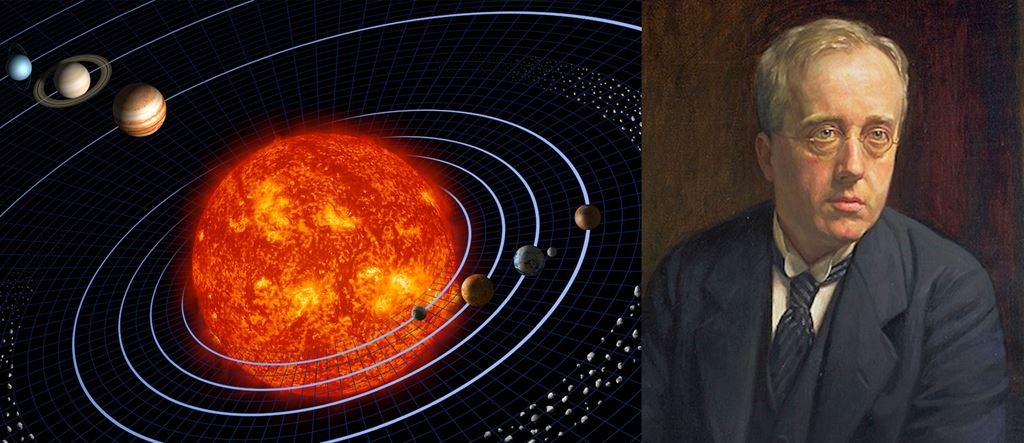
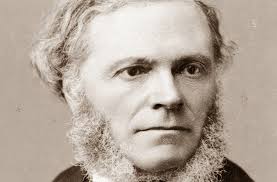
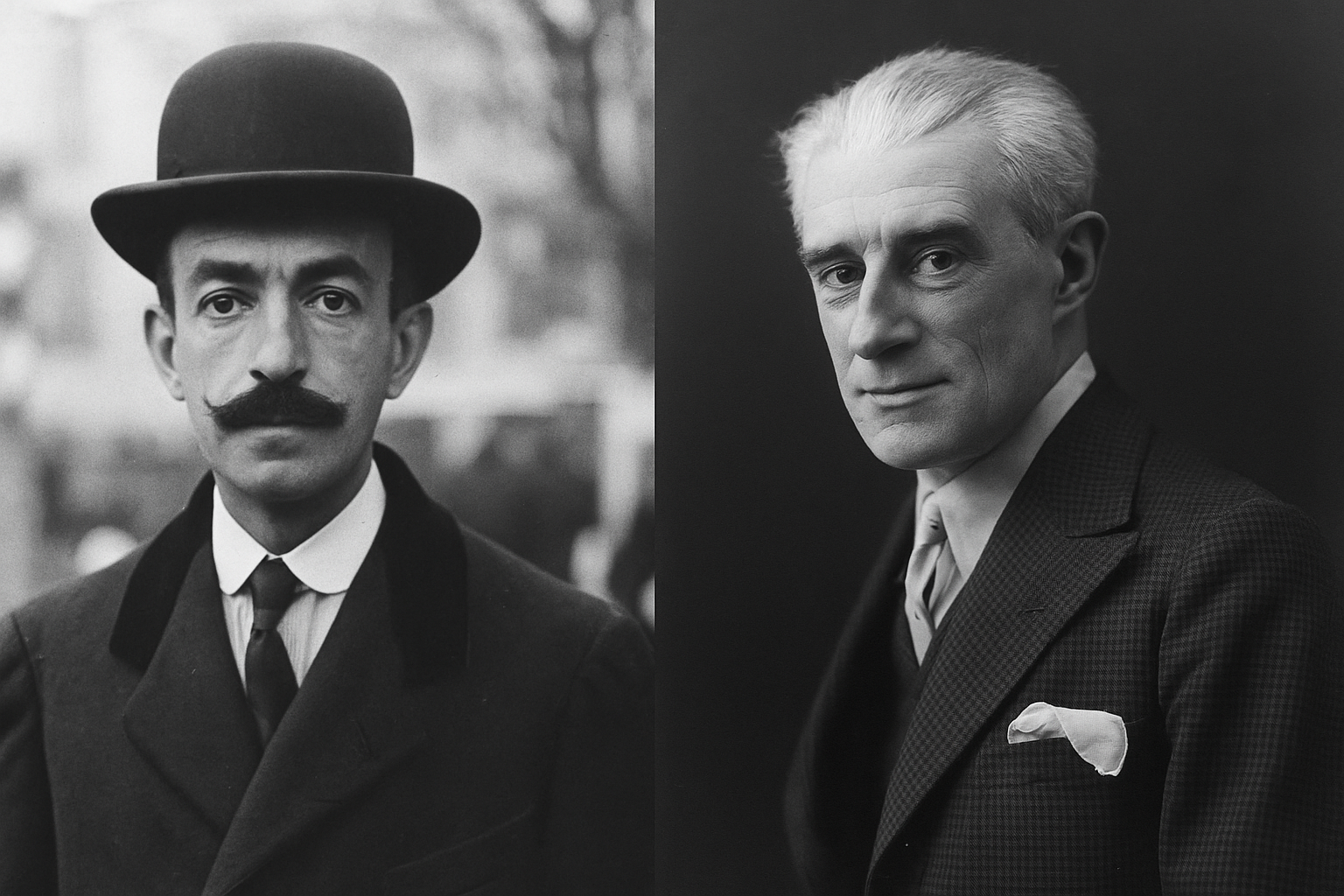
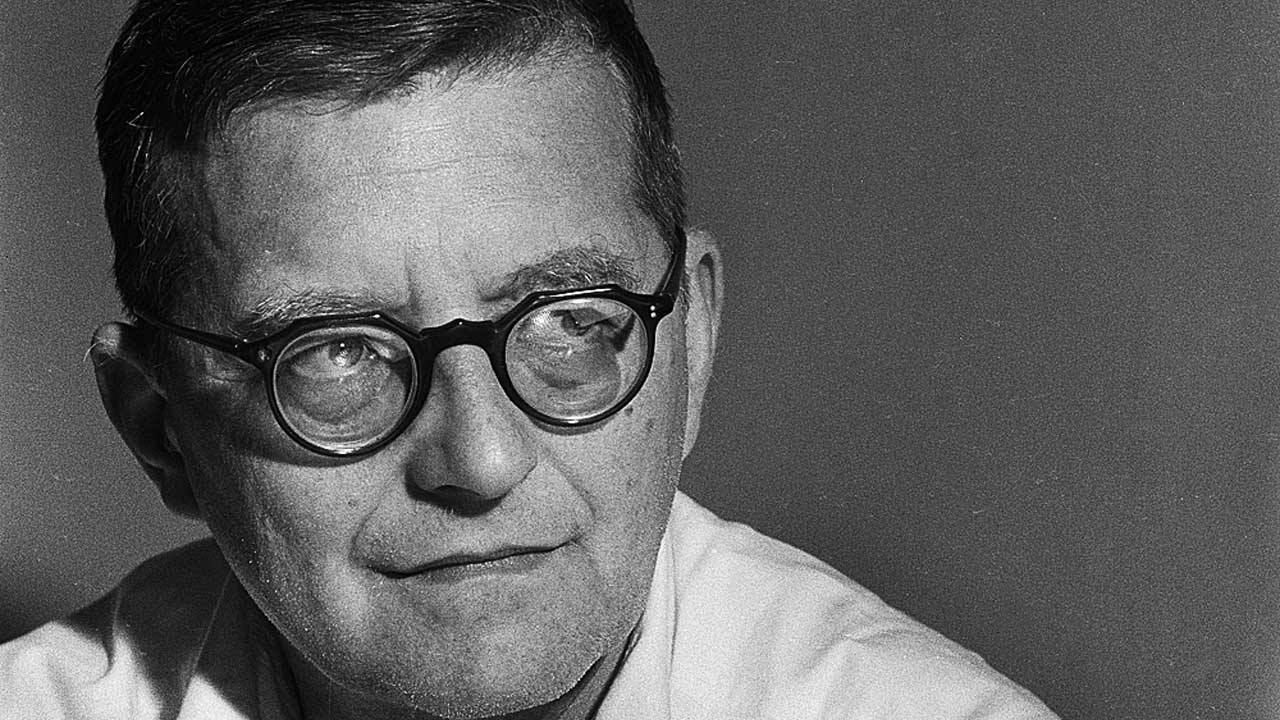
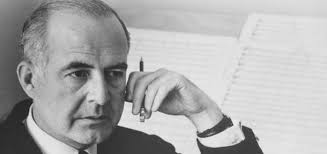
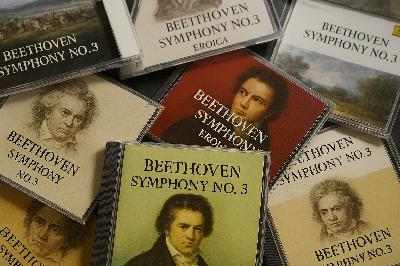
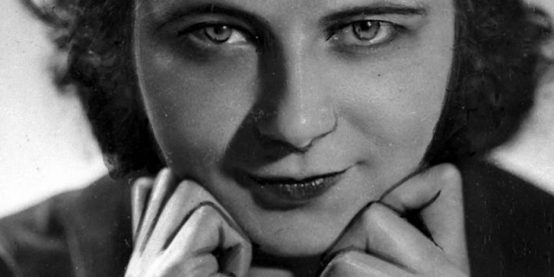
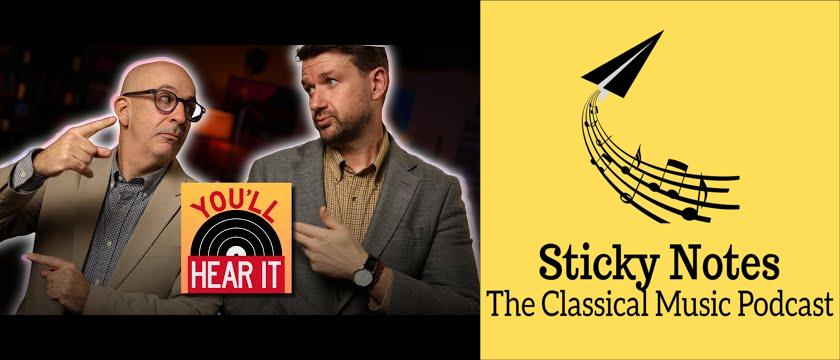
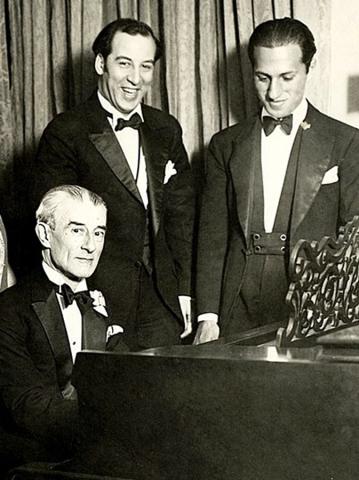
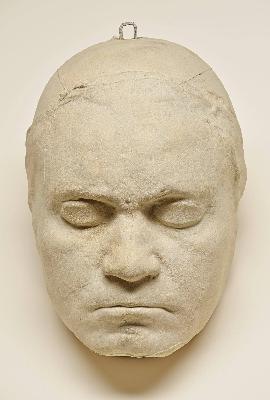
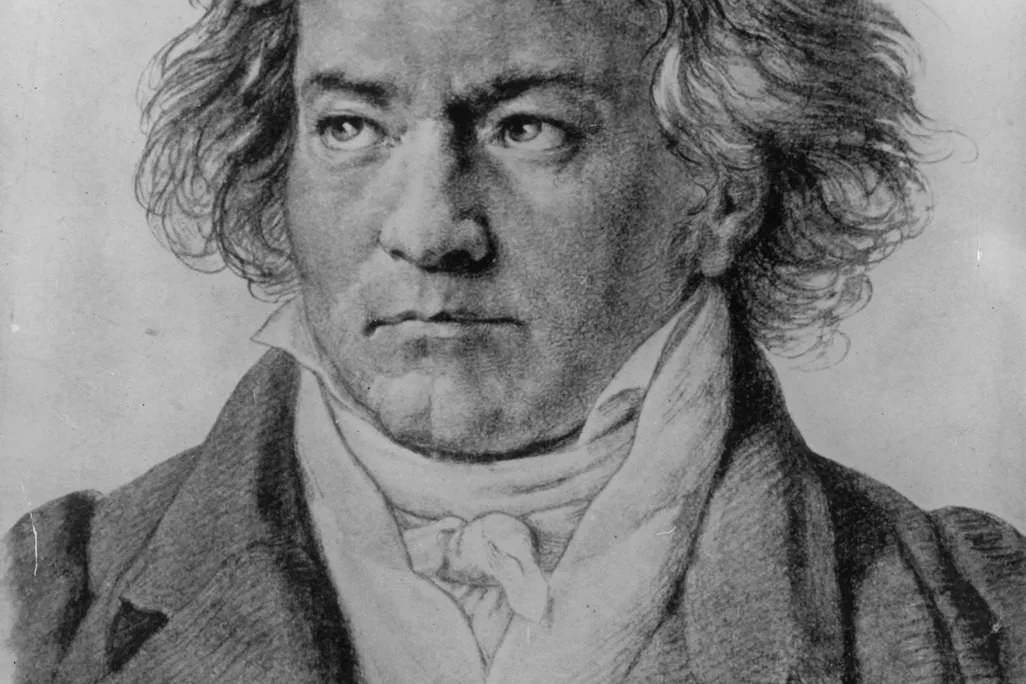
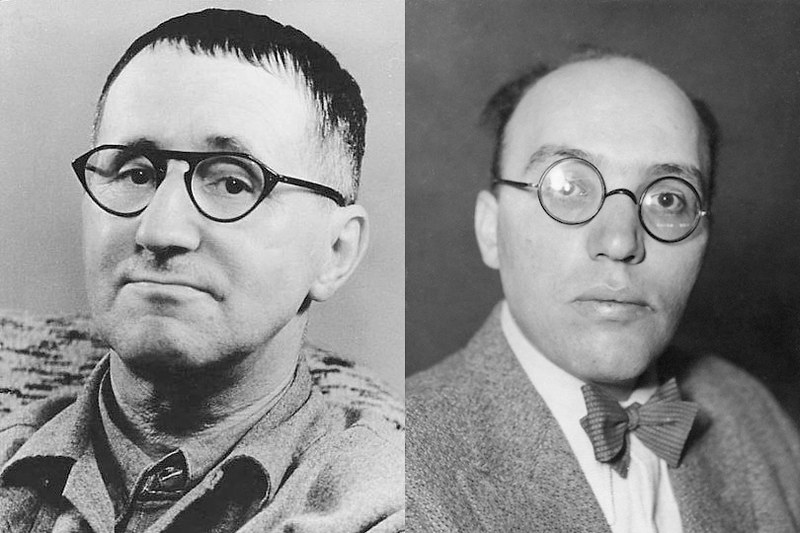










Free love ringtones download here: https://ringtonesb.com/love-ringtones
I can't believe this podcast was sitting out there all this time and I just discovered it! What a wonderful way to geek out and learn more in-depth about so many works that I've either played on the piano, heard in concert or had the privilege to perform as a member of the Buffalo Philharmonic Chorus and later the Washington Chorus (little plug there for two amazing Choral Organizations!) Thank you Joshua for your insight and the inspired and thoughtful way you break it all down for us!
Ein Mix passender Stöhngeräusche sorgt für eine behagliche Atmosphäre https://soundeffekte.net/stohnen/
Für Liebhaber zeitloser Melodien sind die iPhone-Klingeltöne unter https://klingeltonkostenlos.net/iphone/ eine beliebte Wahl.
Hi i love sex my contact)))))))))) here https://vipdeit.com/sex21.html
🔴💚CLICK HERE Full HD✅720p✅1080p✅4K💚WATCH💚ᗪOᗯᑎᒪOᗩᗪ LINK 👉https://co.fastmovies.org
I appreciate you mentioning that it is accessible to both new and veteran listeners, the combination of introductory and deep-dive topics is perfect. Re-recording old episodes to improve the sound is also worth considering. If not, you can take a look at the website https://toquedecelular.com/ which can help you find new ringtones easily and completely free.
Classical music always brings us nostalgia. I really like these songs and used them as my phone ringtones. If anyone wants to refer, you can download it for free here https://dzwonkimp3.com/ . Have a nice day everyone
Oh I guess not the Szell one but this one is better than his
Whose version is this? Szell? Not sure
this podcast is just amazing. I love it🥺👌
Excellent podcast. Definitely worth subscribing. Used to listen to Karl Haas on the radio and miss him.This is a great listen for a modern audience and he bring to light not only the music but the social setting as well. Love it!
It took me a second to realize who "WC" is. You're mispronouncing "Debussy", lol.
What is the piece being played during the intro of the podcast?
Hey I just came across your podcast and it was really nice, thank you!
You sound like such a tool with the throat-clearing pronunciation of Bach. Unless you are going to pronounce Polish composers the way Polish speakers would, Italian composers as would Italians, then stop with saying Bach as if you're battling COVID. It impresses not a soul. Good grief.
Hi. I had really liked the episode called "History of classical music in 60 mins". Wanted to play it in my sociology class today for my students who are all tracing predominant ideas of each era and how they influenced various aspects of life. I'm not able to find the episode. Has it been taken down? :(
This is such an excellent podcast! The question of attracting new audience members who feel they just don't understand classical music makes me think of religion. I think people go to concerts and go to church for the same reason. The silence just before and after a piece ends and the listening during a piece is a sacred, communal act. It does take a lot of Sunday school classes, family participation and commitment to create the practices and knowledge base to feel at home in a service at a house of worship. And most churches have to create engagement tools to attract new members. I see the concert hall as the new church for all people. Cultivating a community where the individual and collective mind can be elevated is surely something everybody craves. At the very end of the podcast, Joshua asked Zsolt what makes him an interviewer who can draw out even the stiffest musician. Zsolt described a friend who characterized his approach as "soulful listening". I agree! This approach is be
love this piece, I'm curious to why such a bad recording was used?
Great talk! I think that through streaming, if the regional audiences can become familiar with the personalities and abilities of the conductor and orchestra members, just as baseball fans become familiar with the individual players, attending actual live concerts will have the same interest and excitement as attending games in a professional ballpark. People want to feel connected. Responding to comments and questions before and after a streamed performance, is a wonderful engagement tool.